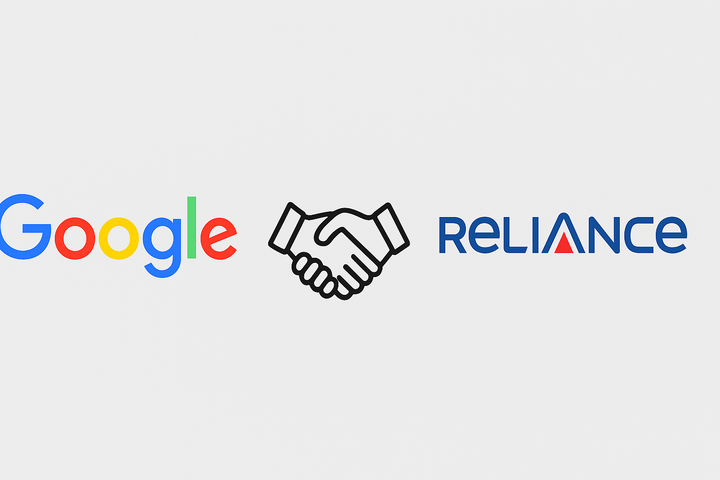The trillion-dollar AI boom has “elements of irrationality”, Says Google boss
Trillion-dollar AI boom shows signs of irrational investment? Here’s Sundar Pichai's versio of what’s driving the concern and its impact on the tech economy.

Alphabet CEO Sundar Pichai’s recently warned that the current surge of AI investment shows “elements of irrationality” and that “no company is going to be immune” if an AI bubble bursts in an interview.
This pulled a rare thread through the tech economy and exposed fissures under the industry’s gleaming narrative. His comments arrive at a moment when valuations, spending and strategic bets tied to AI have ballooned into the trillions, and they force a sober question: is the market pricing fundamentals or is it just a hype?
The data Behind the Worry
The headlines are eye-watering. Nvidia’s market value has rocketed this year as demand for AI chips zoomed, briefly pushing the company into multi-trillion-dollar territory, a sign of how concentrated the AI boom’s financial winners are. Meanwhile, speculative valuations for AI platforms have climbed into the hundreds of billions.
OpenAI’s restructuring and fundraising activity this year has seen the company valued in the high hundreds of billions in private markets, feeding narratives about a potential $1-trillion AI market ecosystem.
Those market movements have attracted both investors and skeptics, and Pichai’s “irrationality” phrase echoes long-standing concerns that exuberant capital can outpace realistic near-term returns.
Why a CEO Would Publicly Flag a Bubble
Two dynamics help explain why Pichai, who is steering one of the most exposed companies in this trend, would sound cautionary notes.
First, market optimism has become self-reinforcing: huge capital inflows fund capacity (data centers, chips, infrastructure) that then raise expectations of near-term productization and revenue.
Second, the running costs of modern AI are real and rising like leaked and investigatory reports show that leading model operators have spent billions just on inference and cloud compute. These are costs that can quickly outstrip revenue in immature business models.
For a firm like Alphabet, acknowledging the risk is both a governance signal to investors and a pragmatic recognition that scale alone doesn’t guarantee proportional returns.
What Pichai’s Caution Implies For the Tech Landscape
- Capital allocation will become choosier. If investors heed the warning, we should expect a re-rating of companies whose business models rely primarily on hype-driven adoption rather than recurring revenues or proven product-market fit. Markets may shift from rewarding bold, speculative announcements to demanding clearer paths to monetization.
- Infrastructure winners remain vulnerable. GPU and datacenter suppliers (the likes of Nvidia, cloud providers, and specialized hosts) have benefited massively from the AI rush, but their fortunes are tied to sustained demand for expensive hardware. Short-term overcapacity or a drop in model-training cycles could compress margins across the supply chain.
- Startups face the hardest landing. Young companies often funded on promise rather than profit will face capital scarcity if investor enthusiasm cools. That could trigger a round of consolidation, layoffs, or pivots toward durable revenue streams, a pattern familiar from prior bubbles. Reuters
Real-world Examples and Analogues
- Nvidia’s frenzy: Nvidia’s valuation surge (and subsequent market reactions around earnings) is the clearest contemporary example of how investor excitement about AI can concentrate value in a few chokepoints, namely chips. That concentration raises systemic risk: if chip demand slows or margins compress, the shockwaves could ripple through the ecosystem.
- OpenAI and mega-rounds: Massive private fundraising, restructuring plans and public markets speculation around AI platform companies have pushed private valuations high; but these firms also burn extraordinary amounts on cloud and inference compute, according to investigative reports. High running costs with uncertain monetization create classic conditions for price corrections.
- Historical parallel dotcoms: The dotcom era offers the canonical lesson: substantial technological change (the internet) was accompanied by exuberant capital deployment that created winners and many casualties. The dotcom collapse didn’t kill the internet; it winnowed companies and reset expectations. The AI scenario today could follow a similar pattern: real, durable innovation alongside painful realignments.
What the Industry Can Do
- Emphasize unit economics and revenue per user. Companies must translate model performance metrics into sustainable cash flows rather than relying on valuation multiples.
- Focus on total cost of ownership (TCO). Decision-makers need realistic models for compute, energy, and data costs and invest in efficiency (model distillation, pruning, edge inference) that reduce dependence on rising infrastructure bills.
- Build resilient business models. Diversify customer bases, prioritize enterprise contracts with predictable revenue, and resist expanding capex without clear utilization plans.
- Regulators and auditors will take note. Market stress could invite closer regulatory scrutiny of disclosure practices, accounting for AI-specific expenses, and claims around product readiness.
The Upside, Even if the Bubble Deflates
A fall in irrational investment would not stop AI progress. Instead, it could redirect capital to higher-quality projects and force teams to build products that demonstrate real value.
The most robust firms, especially those with disciplined monetization, strong engineering efficiency and diversified revenue would likely emerge stronger. As Pichai implicitly acknowledged, the technology’s transformational potential remains; the debate is over pace and pricing, not the eventual influence of AI on the economy.
Bottom line: Pichai’s public warning is both a cautionary note and a strategic pivot. It signals that even the largest investors see the tail risks in today’s AI gold rush. If markets re-price the boom, the short-term correction could be painful, but it may also be the cleansing moment that separates durable AI platforms from speculative mirages.


